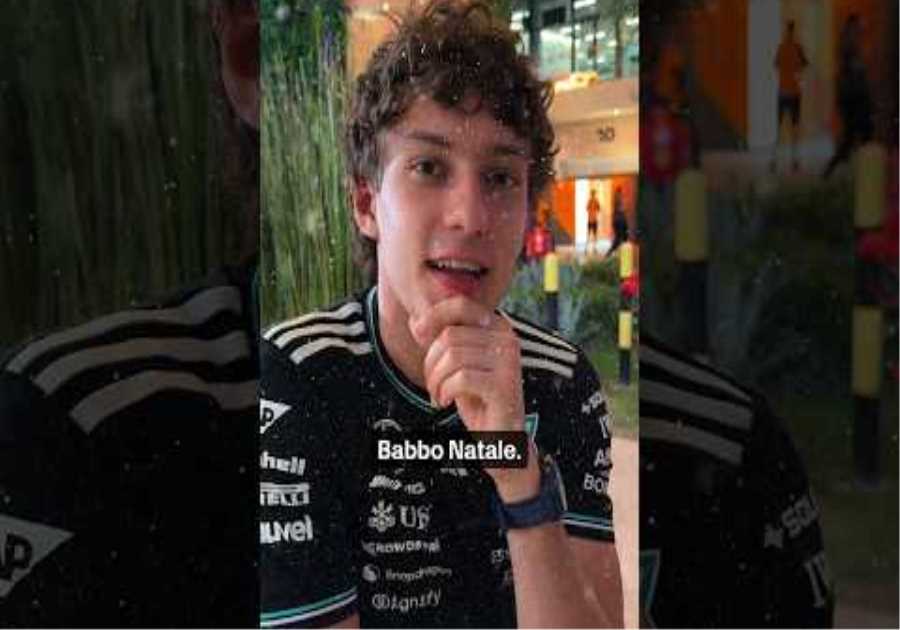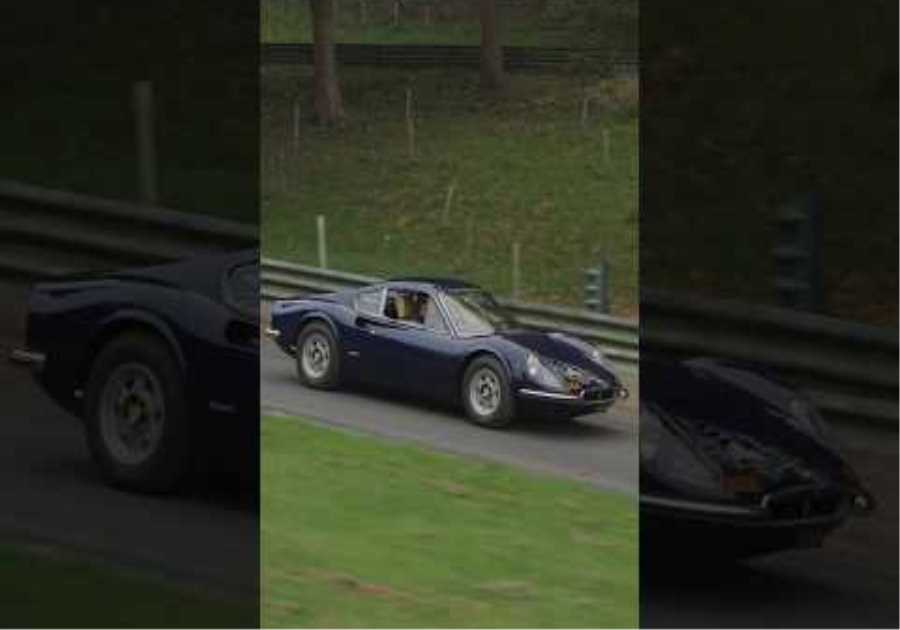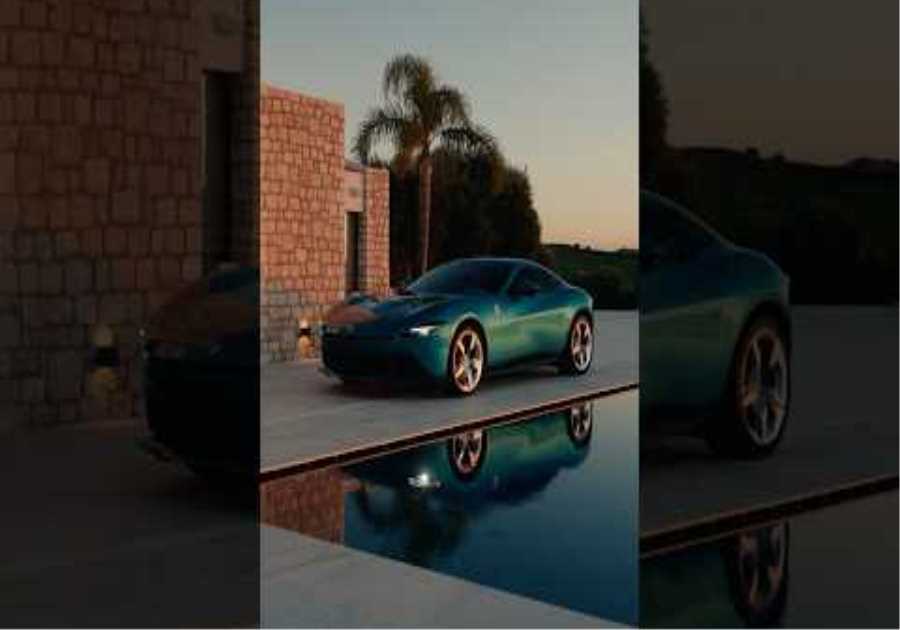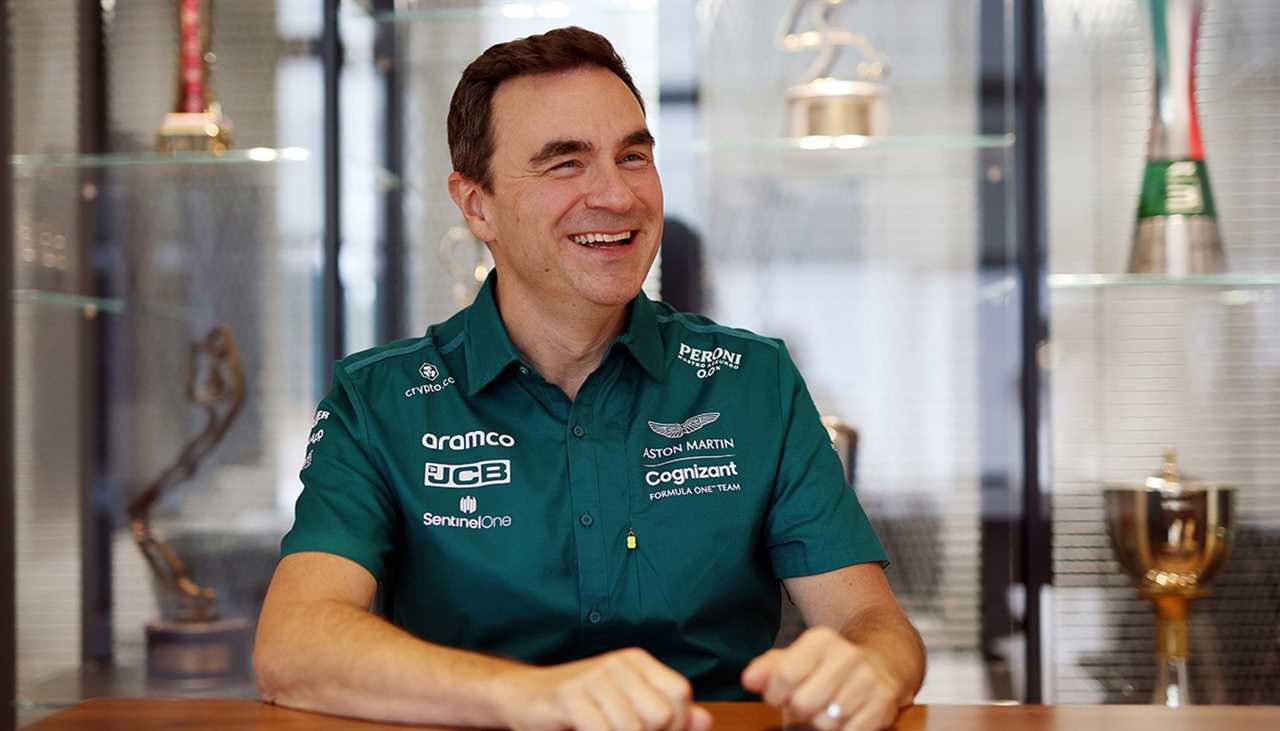
All news
Feature
Aston Martin F1 Technical Director Dan Fallows lifts the lid on leaving Red Bull, learning from Adrian Newey, the similarities between Fernando Alonso and Max Verstappen, and why our 2023 F1 car will be a big step forward.
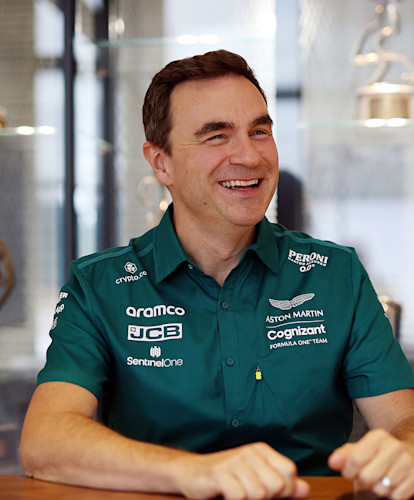
“It’s embarrassing.”
You get the impression Dan Fallows isn’t too keen on being thrust into the limelight as he reflects on how his protracted, high-profile split from Red Bull Racing to join Aston Martin F1 garnered a fair few column inches in the motorsport press.
“It’s really embarrassing, especially when you’ve got friends sending messages with links to articles about you,” he adds. “I’ve never really been interested in this sort of thing – I’m not in it for the publicity.
“All I’m interested in is making fast cars.”
Playing an instrumental role in winning nine Formula One titles suggests he’s pretty good at making fast cars. But, after interviewing Dan for the second instalment of UNDERCUT, our new series that asks the questions you really want answered, he’s clearly not too bad at ‘this sort of thing’ either.
In fact, he’s rather good at it. He’s affable, insightful, and generous with his time. We sat down with him for a frank and illuminating discussion six months into his tenure as Aston Martin F1 Technical Director.
It’s not about doing things the Red Bull way, or the Mercedes way, or the Ferrari way. It’s about coming up with a better way – the Aston Martin way.
Aston Martin F1 Technical Director

So, Dan, how’s life at Aston Martin F1? Has anything surprised you?
It’s been a fascinating journey so far and I’ve only been here several months. The most striking thing for me is that Aston Martin F1 still feels like a race team – everyone is very supportive of each other.
When a team grows significantly in a very short amount of time, it can become unwieldy and departments don’t talk to each other properly. But the lines of communication are very simple and clear here – we need to make sure we don’t lose that.
The high quality of the people that we have at Aston Martin F1 has really impressed me. The engineering talent really is at the level that it needs to be – great ideas, really good creativity.
All that’s been not quite there is a unified clarity of purpose – and that’s what I hope to help bring. It’s all about having an eye on what you’re trying to achieve on the racetrack, right from the outset of designing the car.
When you chose to join Aston Martin F1, you left behind one of the most successful F1 teams of all time – a team that you helped build and where you were instrumental in its success. Why?
I wanted a new challenge. The most rewarding times in my career have been when I’m presented with a challenge, and I’ve gone on to overcome that challenge.
It’s not just the challenge, though, it’s the opportunity to be part of something that goes from being something modest to something spectacular. There’s serious ambition at Aston Martin F1 – from Lawrence Stroll at the very top, right the way through the entire team.
So, to be asked to join the team on its journey, but also given the resources that I have, is incredibly exciting. It’s incredibly exciting when someone puts that level of faith in you, when they’re essentially saying, ‘Here’s a Formula One team, turn it into what you want, get the people you want, run it how you want, make it successful – make your mark.’
I took on this challenge because I felt that things could be done differently. It’s not about doing things the Red Bull way, or the Mercedes way, or the Ferrari way. It’s about coming up with a better way – the Aston Martin way.
If you stay in the same place and you’re successful, you’re going to carry on doing the same thing – and that becomes kind of boring.
Do you see similarities between the between the Red Bull F1 project – in its early years – and the Aston Martin F1 project?
One of the most exciting parts of the Red Bull journey was when the team evolved from Jaguar. A small team with a very limited budget suddenly had significantly more budget, more resource, and more technical strength right at the top of the organisation.
Watching the team grow, being part of that growth, being part of the success, even making mistakes along the way and learning from them, it was incredibly exciting. What’s happening at Aston Martin F1 right now feels very similar to what happened at Red Bull then.
It’s incredibly exciting when someone puts that level of faith in you, when they’re essentially saying, ‘Here’s an F1 team, turn it into what you want, make it successful.’
Aston Martin F1 Technical Director
What did you learn from working with Adrian Newey?
I learnt a huge amount from Adrian. We all know how talented he is as a designer but what people who haven’t worked with him don’t appreciate is just how modest he is from a technical perspective – there’s no technical arrogance with him.
He doesn’t have a problem with letting go of an idea if evidence comes along that supports a different approach.
Of course, you believe in your ideas and what you think is right but, if something or someone comes along with evidence that proves a different idea is better, you must never be afraid to change tack and do things differently – that’s the key thing I learned from Adrian.
You left Red Bull in June last year and were put on gardening leave for nine months. What did you do with your time?
I used the time to reflect on the eight years I was head of the aero department at Red Bull – the mistakes I’d made; the things I’d done well; the things I’d tried that worked; the things I’d tried that hadn’t worked.
And I established what I wanted to be like as technical leader: how I would present myself; how I wanted people to perceive me; what sort of people did I want around me; how did I want the technical teams to work.
By the time I arrived at Aston Martin F1, I had a clear idea of how I wanted things to operate, how people in the team should interact with each other, communicate and so on.
What’s the biggest mistake you’ve made?
In the past, I’ve tried to empower people too much. Empowering people is the right way to manage but you can empower someone so much that the freedom you’re giving them can quickly turn into them feeling unsupported.
You want to give people room to make mistakes – to not be afraid to make mistakes – and learn from them, but not so much that they feel untethered. I’ve learnt that a little bit of intervention, a guiding hand at the right time, can reassure people and ensure they never feel like they’ve strayed too far from the right path.
You were reunited with a former Red Bull colleague in July, when Eric Blandin joined as Aston Martin F1 Deputy Technical Director. How does it feel to get the band back together?
It’s lovely working with Eric again because there are so many shortcuts with somebody you’ve worked with before – the same applies, for example, to our Head of Technical Operations, Andrew Alessi, whom I also worked with at Red Bull.
Eric has obviously had quite a different experience recently, being at Ferrari and then Mercedes, so I think we were slightly unsure about whether our opinions had diverged on things. But we quickly found that we still have so much in common from a technical point of view.
He’s also really committed to the idea of not doing things in a Mercedes way or a Red Bull way and finding a better path instead.
With such a big change in the technical regulations for this season, what was it like being stuck on the sidelines when the new cars were launched?
It was tough… It was tough to see the cars launched and not know exactly why they were looking the way they were – because I hadn’t seen the work that led to those final design decisions.
Having said that, I could make some educated guesses and say, ‘Well, this is why I think some cars are faster, and this is the reason some cars are slower.’ You don’t need the results from the wind tunnel to form an opinion on that.
Could you tell how competitive the AMR22 would be this season?
When I saw the AMR22 for the first time, it was clearly quite different from the Red Bull philosophy. Having worked on the Red Bull car in its initial stages – roughly half the aero development work had been done by the time I left – I have a pretty good understanding of what they’ve done and how they’ve approached things.
I wouldn’t go so far as to say I looked at the AMR22 and thought it wouldn’t be quick, but I did think it would be a challenge to achieve the kind of performance Red Bull were going to achieve with the concept of their car.
I was curious to see the thinking behind the AMR22 philosophy, but in fact by the time I arrived the team had already concluded that they needed to pursue an alternative design solution.
You want to give people room to make mistakes – to not be afraid to make mistakes – and learn from them, but not so much that they feel untethered.
Aston Martin F1 Technical Director

Our upgrade package for the Spanish Grand Prix immediately drew comparisons with your former team’s car. People quickly assumed that was due to your influence. Did you have anything to do with it?
No. Nothing at all. The upgrade had already been designed before I arrived.
I completely understand why the team did it. The car was always designed with two concepts in mind and from very early on the feeling was that it had gone in the wrong direction.
The decision to switch actually helped me get up to speed quicker: I understood more about the concept we introduced at the Spanish Grand Prix than I did about the previous concept.
Will we see the return of the innovative rear wing that the team debuted at the Hungarian Grand Prix in July?
The Marina Bay Street Circuit should suit that wing so it’s likely to be back on the car for the Singapore Grand Prix.
That rear wing got everyone talking. Did you have a hand in its design?
It’s a development that came under my watch, but it’s an excellent example of the strength and depth we have in the technical department. The creativity of our people at Aston Martin F1 is exceptionally high.
I see examples of their ingenuity all over the car – different ways of making the most of the regulations – and the rear wing we introduced in Hungary is one of them.
When do ideas come to you?
Normally at three o’clock in the morning.
Three o’clock in the morning?
Yeah. It drives my wife absolutely insane: me suddenly waking up in the middle of the night with an idea.
It’s strange, really strange. It’s as if your brain is doing all this processing in the background while you sleep. I love it, almost to the point where I’ll try to leave work with a problem in my head and say to myself, ‘Right, off you go,’ and let my brain get to work.
Sometimes it disappoints you but, occasionally, lightning strikes and you wake up thinking, ‘Oh yeah, I just need to do that.’ It’s so weird.
Understanding how people work best and how they come up with ideas is actually really interesting – it’s different for everybody. For me it’s in the middle of the night for some reason, for some people it will happen when they go for a walk or run, but it’s almost never as a result of staring at the same problem for hours on end.
It’s why we’re exploring how we can prioritise open space in the new factory because these things never come to you when you’re sat staring at a screen all the time.
We believe it will be much more competitive than this year’s car. I’m confident we can make a big step forward with the AMR23.
Aston Martin F1 Technical Director
Tell us more about the upgrades the team has planned for Singapore. Are they the last upgrades the team will make this season?
As part of a programme to reduce the weight of the car, and improve the aerodynamic performance, we have some new items for Singapore.
It’s about making the car faster but it’s also about next year’s car. It’s so important to keep bringing developments to the car and not waste any opportunity to test them on the track. You can have as much faith as you like in your wind tunnel and CFD tools, but the real answer is what happens on track.
For us to build confidence in what we’re doing for ’23 – in the direction we’re going – we need to keep bringing updates to the track. The response from the drivers about the changes we have made this season has been good and we’ve seen improvements in the performance of the car too, so it shows we’re on the right trajectory.
Even after last time out at the Italian Grand Prix?
We’ve seen a really positive trend in car performance this year relative to our competitors. There have been blips, and, obviously, Monza was quite a public and very unfortunate one, but these are also learning opportunities.
It’s an opportunity to learn which parts of the team or which parts of the processes don’t necessarily work in the way that they should do. But, once we’ve identified it, we can understand it, learn how to fix it, and move on.
These blips are inevitable for a team that’s rapidly growing from what was previously a very small one – I saw the same thing happen at Red Bull.
Will the 2023 Aston Martin F1 car be competitive?
We believe it will be much more competitive than this year’s car. I’m confident we can make a big step forward with the AMR23.
How can you be sure?
Because when I look around the car, there are areas of improvement absolutely everywhere. I mean, we have literally hundreds of projects on the go right now.
In the aerodynamics department, in the design office, in R&D, throughout the team, people are finding improvements, be it weight improvements, stiffness improvements, improved driver controls, better aerodynamics, a more stable car platform – it’s all going to bring performance to the car.
And if the team doesn’t deliver a competitive car? Fernando Alonso will be in the car next year and he’s never been afraid to make his voice heard.
We know Fernando will be vocal about problems with the car but that shouldn’t be anything new for the team. In Sebastian [Vettel] and Lance [Stroll], we’ve had two drivers who are vocal about the car, provide plenty of feedback and tell us when they think things are wrong.
Fernando has a reputation for very much driving by feel – he really likes to feel the limits of the car.
Aston Martin F1 Technical Director

Is Fernando’s driving style something you can factor into the design of the AMR23?
I don’t know Fernando very well, so my knowledge of his driving style is based on what others have said. He has reputation for very much driving by feel – he really likes to feel the limits of the car.
If that’s the case, we need to make sure that the platform of the car is predictable, stable, all the things that we try to achieve with a car anyway, but it’s absolutely amplified with someone like Fernando.
Max Verstappen is a driver very much like that. He likes to drive a car at, or slightly over, the limit all the time, so you need to make sure the car behaves properly in those conditions – at the absolute limit. My understanding is that Fernando will be very similar.
Is it that exceptional ‘feel’ which allows these drivers to perform at such a high level behind the wheel and why it’s so important to give them a car that allows them to use their talent to full effect?
There are drivers, like Fernando and Max, who drive these high-speed, high-downforce Formula One cars like go-karts. It seems absolutely extraordinary to me that they can treat a car as sophisticated and as fast as a Formula One car in the same way as they do a go-kart, but they do.
And, if that’s how they drive, it’s up to us to give them a car that they can drive like a go-kart.
Have you done much karting yourself?
I’m not very good, but I do enjoy it. There’s a karting club at Aston Martin F1, so I need to get involved in that because it’s one of the most fun things you can do – and it’s great for team building.
Fernando has his own kart track. Fancy your chances against him?
Oh yes. I’m sure he wouldn’t take more than 10 seconds a lap off me.
Final question. How long do you think it will take Aston Martin F1 to compete at the front of the grid?
We are incredibly ambitious about shortening the timescales to get to where we want to be, but there’s a big difference between becoming the leading midfield team and seriously challenging for race wins and championships.
It’s something that’s going to take years rather than months to achieve, so we have to be realistic about expectations for the next couple of years. We all know what we need to do get to the front, but it will take time.
There are so many pieces of the puzzle to put in place and a big part of it is learning from your mistakes. We have to find our own way as team. We have to find the Aston Martin way – the Aston Martin way of winning Grands Prix.
UNDERCUT
Mike Krack on Fernando Alonso’s Aston Martin F1 move
ANNOUNCEMENT
Fernando Alonso to join Aston Martin F1 in 2023
All in. All welcome. All celebrated. Sign up to open up a world of I / AM benefits and once-in-a-lifetime experiences.
Register now


